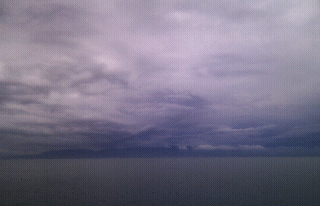
Dark clouds, rain, lights on at noon, hills hidden, the very air grey and heavy. So far summer has been a challenge. It's easier coping with weather like this in November. Long periods of wet weather are not unusual in Highland summers but I still always hope for sun, warmth and dryness. I know what summer should be like, even if it rarely is, and I watch the weather forecasts avidly, waiting for a sign, a hint, that a walk in the high hills might be worthwhile. And at the end of last week a few days of sunshine was predicted. Free of immediate deadlines I packed for a two-night trip onto the Moine Mhor, the Great Moss, in the Western Cairngorms. This vast, high plateau is a wonderful place for wild camps and wild walks. I had last been there in the winter, building igloos and skiing in a white-out (see my blog for
January 30). Walking up the path from Glen Feshie it was hard to imagine it under deep snow. I passed the headwaters of the Allt Sgurnich, where we had built the igloos, then followed this burn out into the heart of the plateau where I camped on dry turf with space and freedom all around.

The night was calm, clear and surprisingly cold for July. I woke once to see faint stars in the half-dark sky. Dawn came with sudden warmth and brightness as the sun cleared the big hills to the east. The land shone in the slanting light. At a glance the Moine Mhor is a dull, grey-green land of faded grass and dark, dismal peat. Look more closely though, especially on a sunny day, and a complex world of colour and intricate details is revealed, laced with sparkling streams and deep pools. The grasses, many red-tipped, vary from emerald to olive. Amongst them grow a wealth of flowers - yellow tormentil, purple orchids, fluffy white cottongrass in boggier areas, the nodding purple petals of butterwort rising on slim stems above the roseate of sticky leaves waiting to catch midges, violets and more. The peat itself comes in many shades from a rusty red where it has started to dry out to a light-absorbing blackness where it is sticky and wet. There is life here too. A thin lonely whistle reveals a golden plover standing on a tussock. At my feet tiny frogs, newly turned from tadpoles, clamber over the ground. Surprisingly what were absent were midges. Even in the shade and at dawn and dusk I wasn't bothered by them.

Packing up the camp, and with no clear idea where I would pitch my tent at the end of the day, other than it would be up high, I climbed the broad shoulder of Braeriach and then, after gazing out over the magnificent landscape of the An Garbh Choire (the rough corrie) and the Lairig Ghru pass I set off on one of the finest high level walks I know, which runs round the rim of the corrie over Sgor an Lochain Uaine to Cairn Toul. This is glorious mountain country, continuously interesting, exciting and inspiring. From the rough granite stones and boulders under your feet to the views into the great depths of the corries everything is complete and perfect.

Turning away from the summits I descended into a green bowl dotted with springs, each one rich with vivid red and emerald-coloured moss. The land quivered with fresh life at the height of this short hill summer. Below I could see the ragged edges of Loch nan Stuirteag, a dark pool under the slopes of Monadh Mor. The sun, lower in the sky now, cut across the hillside under growing clouds, softening the harsh, stony mountain with a wash of subtle warmth.

Above the loch a wide grassy shelf ran across the hillside, probably an ancient shoreline. Here I camped, looking out over the water to gully-riven Beinn Bhrotain. A flat boulder provided a seat and a table as I eased into the quietness of an evening in camp with only the natural world for company. As I gazed over what, for these few hours, was my domain a movement caught my eye, something pale moving on the hillside in the distance. I had seen two walkers descending that way earlier but expected them to be long gone. I peered through my binoculars and the shape snapped into focus and clarity - a reindeer. Scanning the slopes I found several more, the furthest I had ever seen them from their home in Glen More.

The second night was much warmer and a gusty wind and drifting clouds greeted me in the morning. Crossing the Moine Mhor back to Glen Feshie I wandered almost aimlessly, following little burns to see where they led, skipping round pools of liquid peat, climbing onto stony little knolls to survey the landscape and investigating colourful patches of plant life around springs and seeps. A big cairn in the distance acted as a marker. As long as I headed roughly towards it I would eventually reach the path down into the outside world. There was no hurry. It was summer. The hours were long. The sun shone. This was what the hills were all about.


